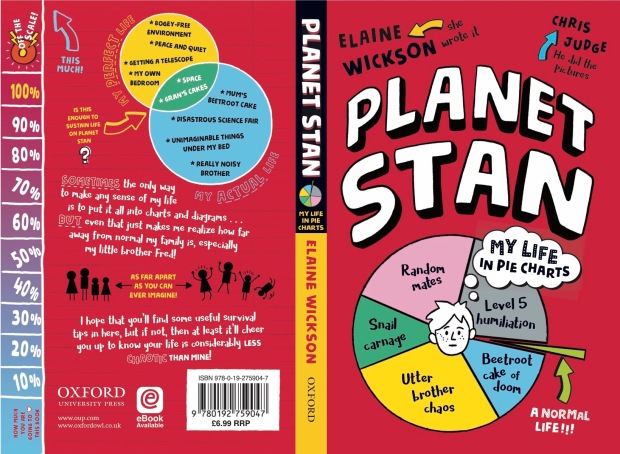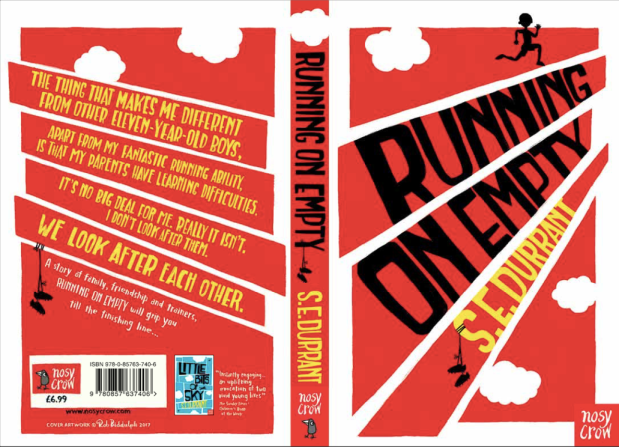
‘A remarkable, revealing and realistic read that was every bit as brilliant as I hoped it would be in painting a powerfully poignant and at times, painfully honest picture of life where real heroes don’t wear capes. And sometimes, they don’t wear the correct-sized trainers either… This one will run and run.’
Rating: ⭐ ⭐ ⭐ ⭐ ⭐
Title: Running on Empty
Author: S. E. Durrant (@SEDurrant)
Illustrator (Cover): Rob Biddulph (@RobBiddulph)
Publisher: Nosy Crow (@NosyCrow/@NosyCrowBooks)
Page count: 208
Date of publication: 1st March 2018
Series status: N/A
ISBN: 978-1510102118
Perfect for Year 5, Year 6 & Year 7.
#3Words3Emojis:
1. Remarkable ☺️
2. Revealing 😥
3. Real 👟
The thing that makes me different from other eleven-year-old boys, apart from my fantastic running ability, is that my parents have learning difficulties.
It’s no big deal for me. Really it isn’t. I don’t look after them.
We look after each other.
A story of family, friendship and trainers, Running on Empty will grip you till the finishing line…
The first line:
The most amazing thing I ever saw was Usain Bolt winning the 100 metres at the London Olympics.
Review: Living in East London, a quick stretch of the legs away from the hallowed track of the Olympic Stadium, AJ is a boy who was born to run. He lives, sleeps, eats, drinks and breathes running. After watching his idol Usain Bolt – albeit on TV – create history at the 2012 London Olympics by setting the world record, AJ spends his every waking moment trying to emulate his hero. He knows he’s different for two reasons. Different in that he has a terrific talent. But also different in that he leads a life unlike his friends, his peers and the people he sees around him, taking on the role and responsibility of a young carer by looking after his parents who have learning difficulties.
Due to the unconditional love, encouragement and support of his beloved grandfather, AJ’s talent develops in to something more than a talent. However his world starts to unravel as he is forced to adjust to life after the death of his grandfather who was more than his steadying influence, more like his rock. Roles are reversed as AJ soon recognises that his grandfather did more than he realised by keeping it all together for him and his parents, as he took charge of the running of the house and paying the bills. Suddenly AJ now finds himself trying to follow Grandad’s lead but with more responsibility than he could ever imagine bestowed upon his small shoulders.
When you’ve outgrown your trainers, you don’t want to run the risk of alerting social services to the situation and there’s no money left to put in the electricity meter – let alone enough to buy a new pair – it is clear that AJ will have a tough and tumultuous time to come trying to cope with it all. Although it seems that AJ’s grandfather cannot be replaced, his spirit does indeed live on in the security and stability that AJ seeks to provide for his parents. It is also here where his grandfather’s comforting words will live long in the memory: ‘Sometimes people think being different is a problem but actually it can be a very nice thing.’
Written in a series of frank, sincere and heart-to-heart conversational exchanges, we really start to feel for AJ as he breaks down the fourth wall between himself and the reader unveiling elements of what life truly feels like when living on the edge. He talks about what at first seem like unsurmountable hurdles to him; problems of transition between school and home life, the overwhelming sense of responsibility now resting upon his shoulders and trying to keep his family on track. But can he overcome these continual challenges that he is faced with or will it all come crashing down around him…? We begin to notice that although AJ runs as a hobby, it is also acts as a form of escapism for him and a way of channeling his grief, his anxiety, his worries and the instability of the situation he finds himself in.
An emphatically empathetic and deeply moving story that’s both attentively and compassionately written, Running on Empty has all the characteristic hallmarks of Sue’s brilliantly endearing style of writing that showcases the unassuming, unseen and unsung heroes of this world, and she – after the deserved success of Little Bits of Sky – achieves the gold medal standard in this genre once again.
It often brought a lump to the throat and tugged at the heartstrings as its laced with tinges of despair and uncertainty. For instance, the chapter where AJ rummages through the box of lost-property trainers particularly struck me at the time and still stays stuck with me, long after reading this. Though, it so equally often made me smile and feel remotely hopeful for AJ. A real emotional rollercoaster of a read where big-hearted characters run the show and the true power of relationships; of finding help in the unlikeliest of people and of total togetherness is rightfully placed at its core.
This book proves that sometimes that just managing and getting by in life in the long run is more of a marathon than a 100m sprint and that real heroes don’t have to wear capes. In fact, sometimes, they don’t – and can’t – even wear the correct-sized trainers.
‘A remarkable, revealing and realistic read that was every bit as brilliant as I hoped it would be in painting a powerfully poignant and at times, painfully honest picture of life where real heroes don’t wear capes. And sometimes, they don’t wear the correct-sized trainers either… This one will run and run.’
Big thanks to Sue Durrant and Clare Hall-Craggs at Nosy Crow for sending me a copy of this wonderfully written book!
Running on Empty is available to order online or from any good bookshop.
Mr E
📚

Author Q&A: S. E. Durrant (SD) with The Reader Teacher (TRT)
I’m very delighted to welcome Sue Durrant to The Reader Teacher today where she’ll be answering my questions about Running on Empty, her reading and writing habits, using her book in the classroom and her favourite footwear!

S. E. Durrant lives in Brighton with her husband and children. She has wanted to be a writer since she was a child and has always squeezed writing in around the edges of her life. She’s worked on a stall at Covent Garden market, sold paintings in Venice and taught art to children. In order to write AJ’s story, she extensively researched what life is like for child carers, and children growing up in the shadow of social services.
Running on Empty
TRT: At The Reader Teacher, for my reviews, I describe books in #3Words3Emojis.
I’ve described Running on Empty as 1. Remarkable 😊 Revealing 😥 3. Trainers 👟, which 3 adjectives and 3 corresponding emojis would you choose to best describe it?
SD: 1. Optimistic 😊 2. Realistic 💯 3. Empathetic 🙂
TRT: What books, people, ideas and inspirations have helped you to write Running on Empty?
SD: I was inspired to write Running on Empty after reading an article about a parent who had learning difficulties. I began to think about issues learning difficulty parents might face and to wonder how a child of learning difficulty parents might view our often unkind, impatient world. My protagonist, AJ, is eleven years old and has just begun secondary school; his very supportive grandad has died unexpectedly and AJ briefly tries to step into his shoes and manage the family affairs.
I have seen many children make the transition to secondary school, through my own children, and I wanted to explore the likelihood of AJ’s problems going unnoticed in the jump from a small primary to a large secondary. I also think eleven is such an interesting age, as children try to work out who they think they want to be, yet are still very much tied to childhood, veering between self-confidence and embarrassment in moments.
I was also inspired by the 2012 Olympic Games in East London, which is where my book is set. I was lucky enough to spend a day at the 2012 Paralympics Games and found the atmosphere inspirational. AJ and his family watch Usain Bolt win the 100m gold and that moment becomes a source of hope for AJ, who is a very keen runner.
TRT: What do you hope readers will get from reading Running on Empty?
SD: I hope readers will empathise with AJ, his devotion to running and his resilience in the face of difficulties. I also very much hope they find him funny, quirky and relatable.
TRT: If you could build your own pair of trainers, what would they look like? What special features would they have?
SD: Unlike AJ, I am not a runner so my dream trainers would have some special component that would enable me to get up hills.
TRT: What is your favourite footwear that you own?
SD: My favourite footwear, though not beautiful, are my walking boots – when I put them on I know I am going somewhere lovely.
TRT: If you were to choose the character that is most like you from Running on Empty, who would it be and why?
SD: I’m not sure any of the characters are like me though perhaps AJ’s relationship with his mother in some way reflects my relationship with my son when he was eleven/twelve years old.
TRT: What kinds of research did you do regarding young carers and how did this help when writing Running on Empty?
SD: I visited a group of parents with learning difficulties who helped me understand some of the issues they face, for example the huge amount of paperwork their children bring home from school. I also spoke with a boy whose parents have learning difficulties.
Reading and Writing
TRT: What first attracted you to writing?
SD: I have written for as long as I can remember, I think as a way of trying to make sense of the world, and I would continue write regardless of whether my work was published. I love the fact I can create situations and try to figure out what they mean.
TRT: Which parts of writing do you find energise you and which parts do you find exhaust you?
SD: I find the beginning of writing a new book exhausting, particularly trying to work out some sort of plot. The most energising part for me is when I have found the voice of my protagonist and can enjoy trying to imagine the world through his/her eyes.
TRT: What is your favourite book from childhood?
SD: My favourite book from childhood is The Silver Sword by Ian Serraillier. I love the way that, against the odds, the children find their way to safety and a future they can have some choice in.
TRT: When you were a child, can you remember contacting any authors or them ever visiting your school and if so, did this inspire you?
SD: We didn’t have visiting authors when I was at school and I thought becoming an author was completely unattainable and involved some kind of magic. It can only be a good thing for children to meet authors in schools and discover they are very ordinary human beings and no magic is involved.
TRT: Currently, we seem to be living in a golden age of books. What are some of the interesting things/things you like that you’re seeing in other children’s books today?
SD: I love the fact that a greater variety of books is being published. I think the more child readers can see themselves reflected in stories the better and more interesting for everyone.
TRT: I know you are heavily invested and focused on promoting Running on Empty but can you tell us about any stories you’re working on or what you want to work on next? Do you plan to focus on writing more books for children or do you have something entirely different lined up outside of the publishing world?
SD: I have just written a short story which will be included in the new edition of Little Bits of Sky which will be published in July. This short story is set in 1947 when Glenda Hyacinth arrives at the orphanage, Skilly House. Glenda is the girl whose letter Ira finds over forty years later.
I’m also working on my next children’s book. It is early days yet and I’m still struggling with the plot but it will be set in Brighton where I now live and will have an eleven year old female protagonist.
Running on Empty and Teaching
TRT: Could you suggest ways that your book could be used in the classroom for the many teachers that will read this?
SD: Running on Empty could be used as a starting point for discussing grief, poverty, running, resilience, school transition and day to day embarrassment of being eleven years old.
TRT: When reading Running on Empty, I particularly liked the scenes between AJ and his PE teacher, Mr Higgins. When researching young carers, what were your experiences of visiting schools and speaking to teachers? What did you find out? Did you test out your ideas for Running on Empty on them?
SD: I didn’t test my book on teachers but as a parent I have had a lot of recent experience of PE teachers and have always found them remarkably dedicated and energetic. The PE teacher in Running on Empty starts out as a bit of a caricature, which I suppose is how time-pressed teachers often appear, though in time he shows a more human side. I enjoyed writing the scenes between Mr Higgins and AJ – they are each trying to gauge what each other think without giving too much away.
TRT: If you were to ‘pitch’ your books to teachers in a sentence or two for them to use it in their classrooms or for parents to choose to read it at home, how would you sum them up?
SD: I find it hard to pitch my own books so have chosen two lovely reviews:
Little Bits of Sky – This story of looked-after siblings of 9 and 11.. is instantly engaging, sustaining emotional involvement throughout… this is an uplifting and convincing evocation of time and place, of two vivid young lives, and of the hope that kindness can offer. Nicolette Jones, The Sunday Times
Running on Empty – AJ is a boy who just loves to run. Swept away on the belief and hope that anyone can achieve their dream after watching the 2012 London Olympics, all he wants to do is run on the hallowed track where he saw his idol Usain Bolt win gold… Incredibly emotional and powerful storytelling makes ‘Running On Empty’ a truly, compelling read. bookloverjo.wordpress.com
TRT: For those teachers reading this Q&A and would like to enquire about arranging the opportunity of a school visit from yourself, how would it be best to contact you regarding this?
SD: Through Twitter @SEDurrant or via my publisher Nosy Crow @NosyCrow/@NosyCrowBooks.
Two more before you go!
TRT: What has an interviewer/blogger never asked you before, that you always wished you could answer?
SD: I’ve never been asked my favourite book but if I was I would choose Wuthering Heights by Emily Bronte.
TRT: Finally, can you share with our readers something about yourself that they might be surprised to learn?
SD: I have never given anyone a full box of chocolates.
TRT: Thank you so much for stopping off at The Reader Teacher today, Sue. I wish you every success with Running on Empty!
You can find out more about Sue by visiting her publisher’s website or following her on Twitter.
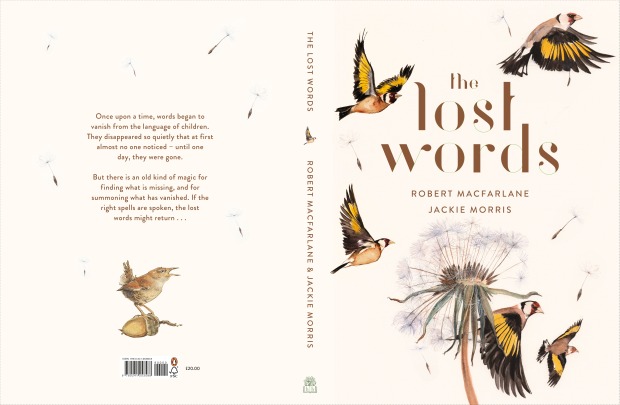




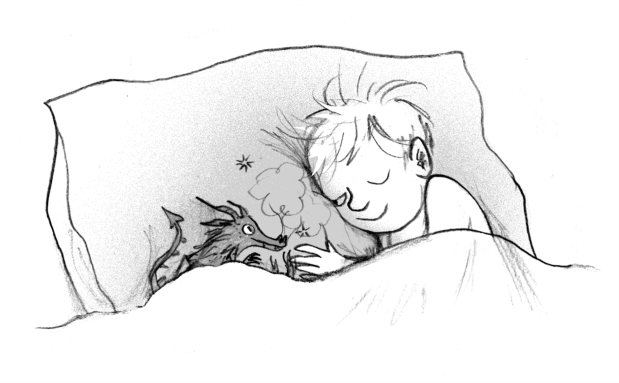
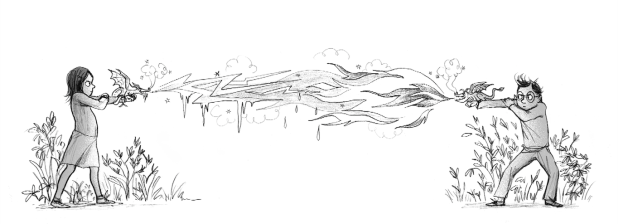









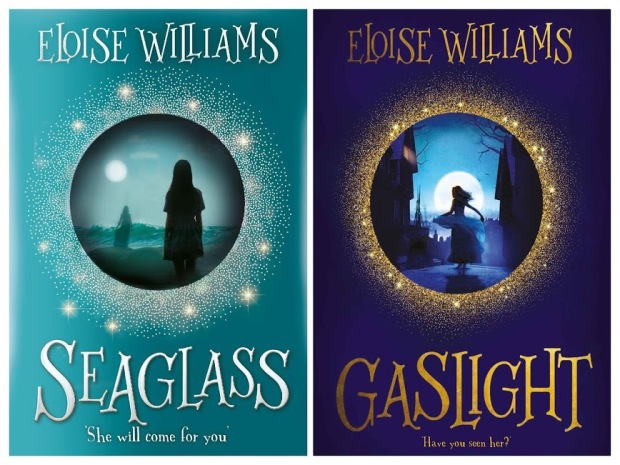

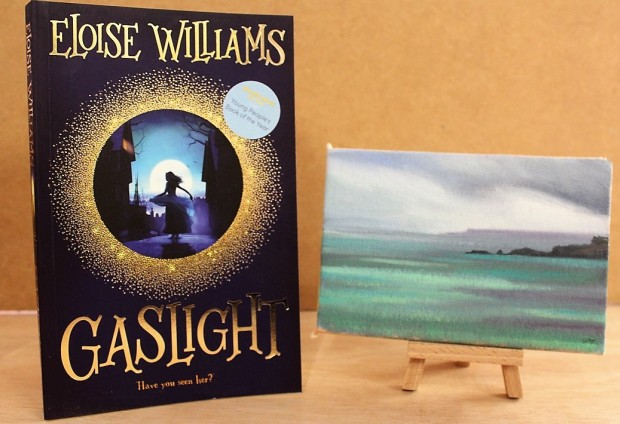
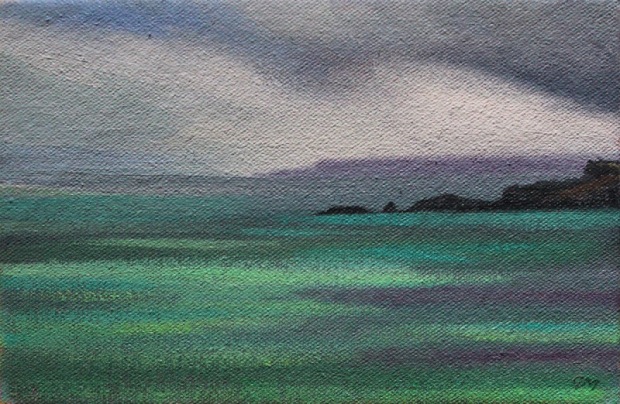

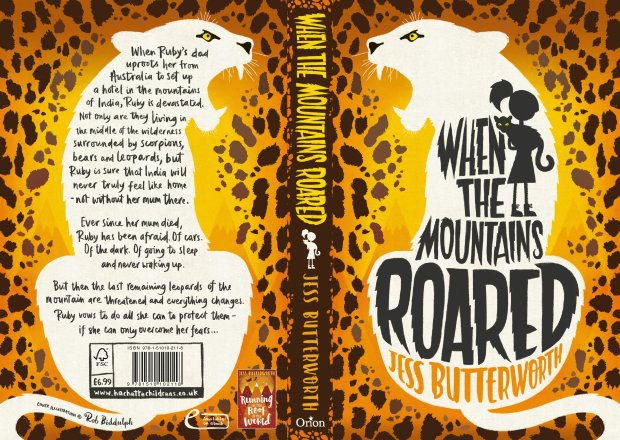


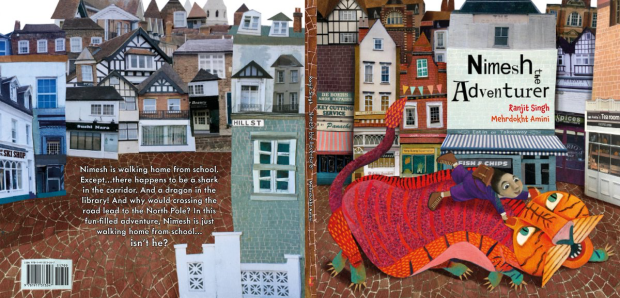
 Review:
Review: Recently, I attended an event where I had the pleasure of hearing triple laureates, Lauren Child (
Recently, I attended an event where I had the pleasure of hearing triple laureates, Lauren Child (




